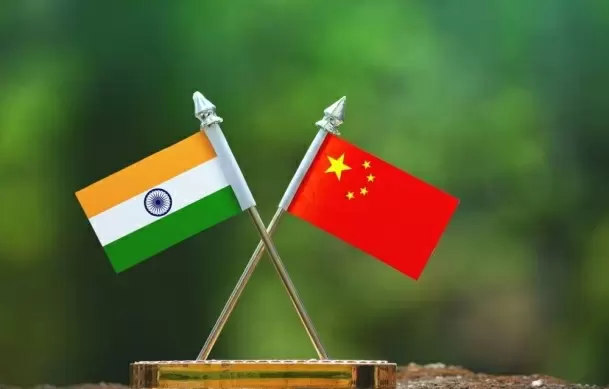India's China stance has to change irreversibly: PIC
New Delhi
23-March-2021

India's stance on China has to irreversibly change in the light of the recent developments, both bilateral and global. The earlier strategy is simply not tenable in the light of an increasingly confrontational, if not hostile, neighbour, a new study said.
The paper has been authored by a PIC team comprising Ambassador Gautam Bambawale, Vijay Kelkar (Vice President, PIC), Raghunath Mashelkar (President, PIC), Ganesh Natarajan, Ajit Ranade and Ajay Shah.
The paper was sent by the PIC to Prime Minister Narendra Modi and other senior members of the government last week.
The paper sketches elements of a strategy which coheres and unifies, rather than compartmentalises economic, diplomatic and geopolitical aspects of the India-China relationship. It recognises the need to build strong coalitions with partners who have aligned objectives.
In the longer term, a domestic economy energised by strategic patience and high sustainable growth is the appropriate new framework. Coalitions, calm confrontation, and industry growth in areas where one can build a competitive advantage and become an alternate supply chain to China is the recommended new strategy for China.
The study notes that in recent years, China has dismantled this arrangement and established a more hostile stance towards India with simmering military conflict.
Watch This TWL Video
When the conflict became kinetic in Doklam and then in Ladakh, the immediate impulse was of course about mobilising troops. There was an outcry in the press, nationalistic fervour, and emotional boycotts of Chinese goods.
The study says that it is important to see these problems on a larger scale, in terms of space, time and force. It is not just about a few weeks in Ladakh involving a few thousand troops. There is much more at play. If India merely responds with troop movements and winter gear, this may set the stage for future reverses, it said.
At present, India is in a weak position when compared to China. The study says whether GDP, state capacity, the capabilities of the best firms, the extent of internationalisation, the mastery of science and technology or the quality of the top intellectuals -- at present, China is significantly ahead of India.
This superiority can be used by China to put pressure on India in many ways. Some examples of this include a sheer display of military strength to grab land at the border, the use of a variety of levers to foster friction for India with neighbouring countries, and nudging decision making at international organisations in ways that hinder India's interests.
Looking into the future, if the gap between Chinese and Indian economic growth rates continues, these problems will be amplified.
As per the study, in the short run, Indian diplomacy faces a new situation. Never before has India faced a hostile nation with significantly superior strength. China in 1962 was at roughly Indian levels of GDP; Pakistan is a smaller country. This is the first time that India has hostilities with a substantially stronger nation. Confronting China alone would be unwise. It is essential to build coalitions, the study said.
India needs to embark on a process of building deep ties with about 20 countries. The genuine depth of these relationships requires linkages in trade, finance, investment, education, travel, migration and shared values. India will need to modify domestic policy positions in ways that suit the interests and values of these partners.
In the short run, there is debate over the protectionist measures that will harm Chinese exports or investment in India. A significant proportion of those moves are self-defeating in that they harm India more than they harm China, the study adds.
There is a case for three groups of restrictions: Limit companies controlled by the Chinese state from a controlling stake in a hotlist of sensitive infrastructure assets; steering clear of Chinese-controlled technological standards; and blocking surveillance of Indian persons.
"The judicious use of self-reliance (Aatmanirbhar) grounded in self-confidence (Atmavishwas), where a confident India engages with the world without insecurity, forms alliances with like-minded countries, and leverages democracy and a skilled workforce to good effect, is the path through which the China challenge can be addressed," the report said. - IANS
More Headlines
32 Dead As 7.1 Magnitude Earthquake Strikes Nepal-Tibet Border
Human Metapneumovirus Cases in India Rise to 5, Former WHO Expert Urges Calm
Oyo Hotels Tighten Rules on Couple Check-Ins to Ensure 'Safe Hospitality'
TN Guv Walks Out Of Assembly, Says CM Stalin, Speaker Stubbornly Refused Appeal On National Anthem
Vande Bharat Sleeper Train Hits 180 km/hr During Successful Trials
32 Dead As 7.1 Magnitude Earthquake Strikes Nepal-Tibet Border
Human Metapneumovirus Cases in India Rise to 5, Former WHO Expert Urges Calm
Oyo Hotels Tighten Rules on Couple Check-Ins to Ensure 'Safe Hospitality'
TN Guv Walks Out Of Assembly, Says CM Stalin, Speaker Stubbornly Refused Appeal On National Anthem
Vande Bharat Sleeper Train Hits 180 km/hr During Successful Trials










